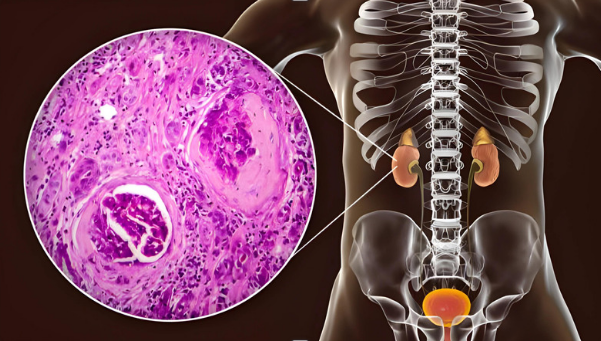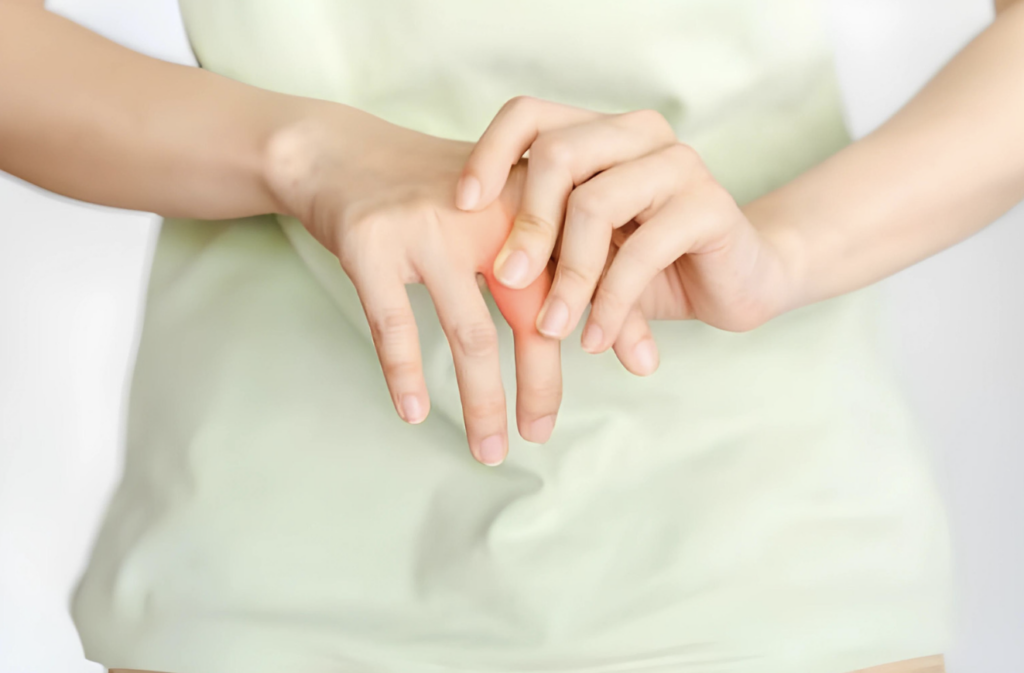Joint Health
Rheumatoid Arthritis: Symptoms and Treatment
Rheumatoid arthritis (RA), a complicated inflammatory disease that affects millions worldwide, causes painful symptoms beyond joint pain.
From modest morning stiffness to joint deterioration, Rheumatoid Arthritis presents in many ways, making diagnosis and therapy difficult. It causes systemic inflammation and invades many organs and tissues beyond the musculoskeletal system. Early detection and effective treatment of Rheumatoid Arthritis require understanding its vast variety of symptoms. Rapid action can delay its progression. This article explains rheumatoid arthritis symptoms and treatments to help people diagnose and manage this persistent disease for a better quality of life and long-term health.

History of Rheumatoid Arthritis
Rheumatoid arthritis has been around for thousands of years. Dr. Solomon believes that reports of alterations in the bone structure of Egyptian mummies fit the disease description.
However, the condition was not widely recognized in the medical world until the 19th century. Artists such as Rembrandt Harmenszoon van Rijn and Sir Peter Paul Rubens depicted rheumatoid arthritis centuries ago. Some of their 17th-century work featured hands with malformations specific to this illness.
“It’s so interesting how rheumatoid arthritis has been depicted in art,” Dr. Solomon said. “There are actually artists who have suffered from the condition and found ways to create their work despite their limited movements.”
One noteworthy example is the 19th-century painter Pierre-Auguste Renoir. Dr. Solomon stated that Renoir’s fingers were crippled as a result of the ailment. By the end of his life, Renoir was creating his paintings with a brush linked to his hand.

Signs and Symptoms
Rheumatoid arthritis can affect any joint in the body, although it typically affects smaller joints, particularly those in the hands, wrists, and feet. Signs and symptoms of the illness usually appear in waves. Symptoms may worsen for a while before subsiding, only to return later. These incidents are usually referred to as “flares.”
Tender, Warm, Swollen Joints
Tender, heated, and swollen joints are common signs of rheumatoid arthritis, indicating the inflammation that defines this inflammatory disease. This trifecta of symptoms indicate the immune system’s mistaken attack on the synovial lining of joints, resulting in pain, heat, and apparent swelling.
The tenderness felt frequently makes even the slightest contact intolerable, disrupting everyday tasks and lowering quality of life.
The warmth originating from damaged joints shows increased blood flow and inflammatory activity in the area, demonstrating the body’s ongoing battle with its own tissues.
Swelling, caused by excess synovial fluid and inflammatory tissue, not only increases joint stiffness but also changes joint shape and function over time.
These symptoms usually affect numerous joints symmetrically, separating rheumatoid arthritis from other types of arthritis. Early detection of sore, heated, and swollen joints is critical for quick diagnosis and therapy to reduce joint deterioration and improve long-term results for those living with this severe disease.
Joint Stiffness
Joint stiffness is a common symptom of rheumatoid arthritis, often posing a significant obstacle to daily activities and movement. This stiffness, which usually worsens in the mornings or after periods of inactivity, can greatly hinder one’s ability to accomplish even simple actions like getting out of bed or holding items.
The stiffness is caused by inflammation in the joints, which reduces flexibility and range of motion. Untreated joint stiffness can progress to more severe joint abnormalities and functional restrictions, lowering the individual’s quality of life.
Understanding the nature of joint stiffness in rheumatoid arthritis is critical for both patients and healthcare providers, as it is a reliable predictor of disease activity and progression.
Effective management techniques, such as medication, physical therapy, and lifestyle changes, aim to reduce joint stiffness and preserve joint function, ultimately allowing people with rheumatoid arthritis to keep independence and a higher quality of life.
Fatigue, Fever and Loss of Appetite
Fatigue, fever, and loss of appetite are common but serious symptoms of rheumatoid arthritis, indicating the disease’s systemic impact in addition to joint inflammation.
Fatigue, an overpowering sense of fatigue, can be crippling, impairing one’s capacity to complete everyday duties and lowering overall quality of life. This exhaustion is frequently disproportionate to the degree of exertion and may remain even with proper sleep.
Furthermore, fever, albeit less prevalent, might result from the body’s inflammatory reaction to the autoimmune process. Fever worsens fatigue and may indicate increasing disease activity.
Another usually neglected symptom of rheumatoid arthritis is loss of appetite, which is caused by the general malaise and systemic inflammation that accompany it. As a result, people may have accidental weight loss and nutritional deficits, which worsen their general health.
Recognizing and resolving these systemic symptoms are critical components of comprehensive rheumatoid arthritis management techniques, which aim to enhance affected individuals’ overall well-being and quality of life in addition to relieving joint pain.

Other Affected Areas
Early rheumatoid arthritis tends to affect your smaller joints first — particularly the joints that attach your fingers to your hands and your toes to your feet.
As the disease progresses, symptoms often spread to the wrists, knees, ankles, elbows, hips and shoulders. In most cases, symptoms occur in the same joints on both sides of your body.
These symptoms demonstrate the complicated and multidimensional nature of rheumatoid arthritis, underlining the importance of comprehensive therapy measures to alleviate its burdensome consequences on patients’ daily lives.
About 40% of people who have rheumatoid arthritis also experience signs and symptoms that don’t involve the joints. Areas that may be affected include:
- Skin – Manifestations like rheumatoid nodules or skin ulcers may occur due to inflammation.
- Eyes – Dry eyes and sclera inflammation are two examples of ocular problems that can impair vision and comfort.
- Lungs – Rheumatoid arthritis-associated interstitial lung disease can lead to respiratory symptoms, including cough and shortness of breath, affecting lung function and overall respiratory health.
- Heart – Heart involvement can cause pericarditis, or inflammation of the heart lining, which can result in problems such as chest discomfort or arrhythmias.
- Kidneys – Systemic inflammation can impair kidney function, raising the risk of diseases such as glomerulonephritis.
- Salivary glands – The salivary glands may become inflamed, resulting in symptoms including dry mouth and difficulty swallowing.
- Nerve tissue – Joint abnormalities can cause inflammation or compression of nerve tissue, resulting in symptoms like tingling or weakness.
- Bone marrow – Bone marrow suppression may occur, reducing blood cell synthesis and raising the risk of anemia or leukopenia.
- Blood vessels – Vasculitis, or inflammation of blood vessels, can cause consequences like skin rashes or organ damage, worsening the course of rheumatoid arthritis and emphasizing its systemic character.
Rheumatoid arthritis signs and symptoms may vary in severity and may even come and go. Periods of increased disease activity, called flares, alternate with periods of relative remission — when the swelling and pain fade or disappear. Over time, rheumatoid arthritis can cause joints to deform and shift out of place.

Rheumatoid Arthritis Treatment
Rheumatoid arthritis treatment seeks to ease symptoms, minimize discomfort, prevent further damage, and enhance quality of life. Consult your doctor about treatment options. They can help you decide which option is best for you. Medicine, surgery, and lifestyle modifications are all possible options.
Medicine
For mild cases of Rheumatoid Arthritis, your doctor may recommend taking over-the-counter (OTC) medications to lower inflammation. These include aspirin (Bayer), ibuprofen (Advil), and naproxen (Aleve). Acetaminophen (brand name: Tylenol) is a pain reliever that can help you feel better. Your doctor will also prescribe medications to help with Rheumatoid Arthritis. Prescription pain medications and nonsteroidal anti-inflammatory medicines (NSAIDs) are used to treat pain and swelling. These medications do have some negative effects and should be used cautiously.
Immunosuppressants, or immune-modulating medications, can also be used to treat Rheumatoid Arthritis. When you have Rheumatoid Arthritis, your immune system becomes out of control. These medications restore it to normal. However, they can impair your immune system’s ability to respond to infections.
Your doctor may also prescribe a steroid, such as prednisone. Steroids can relieve pain and swelling while decreasing joint deterioration. However, they can only be utilized for a short time. Steroids become less effective as they are used over a longer period of time. Steroids can cause adverse effects such easy bruising, bone weakening, cataracts, and diabetes.
Anti-rheumatic medications can help treat Rheumatoid Arthritis. If you start using these medicines early enough, they can help slow joint degeneration. These medications act slowly, so it may take several weeks to feel better. Your doctor may do a blood test to ensure that these medications are safe for you. Some of these medications should not be taken while pregnant.
Surgery
Surgery may be an option for severe cases of Rheumatoid Arthritis or those that have not responded well to medical treatment. Procedures may involve fixing a deformity or replacing a joint, the most common joint replacements are for the knee and hip. The benefits of surgery can help relieve pain and restore joint flexibility, speak with your doctor about the benefits and risks of surgery.
Lifestyle Changes
There are lifestyle modifications you can implement to assist control Rheumatoid Arthritis:
- Lose weight if you are overweight.
- Eat a nutritious diet.
- Stop smoking.
- Engage in frequent, mild exercise. This can help strengthen the muscles surrounding your joints and reduce fatigue. Mild water aerobics and walking are excellent exercises to try. If you get pain in a new joint while exercising, pause and rest. If the discomfort doesn’t go away, see your doctor.
- Use both hot and cold. Heat relaxes stiff muscles, while cold relieves pain. One method of applying heat is to take a 15-minute hot shower or bath. Ice packs and joint soaks are examples of cold treatments. Do not utilize these approaches if you have weak circulation.
- Reduce the pressure on your affected joints. For example, canes can aid in walking. Consider employing grabbing tools to assist with picking up stuff. Consult your doctor about additional methods to simplify your daily life.
Self-Care
Working with your doctor to ensure you receive proper medical therapy is critical, but you can also take steps on your own to manage your Rheumatoid Arthritis and relieve pain and tiredness.
Diet, exercise, smoking cessation, and mental wellness are all important factors in maintaining good health and managing Rheumatoid Arthritis. Learn how to set health goals and manage pain with our pain resources.
Healthy Eating – A balanced, nutritious diet with recommended amounts of all food categories promotes wellness and helps maintain a healthy weight.
Daily movement – Even if you don’t have time to exercise, strive to include movement in your daily routine. Use the stairs instead of the elevator. Park in a location that requires you to walk a bit to access a building. Travel the extra mile to your office meeting.
Balancing activity and rest – Maintaining physical activity during a flare is beneficial, but rest is crucial when Rheumatoid Arthritis causes joint discomfort, swelling, or stiffness. Rest helps to alleviate inflammation and exhaustion associated with a flare. Taking breaks during the day protects joints and conserves energy.
Treatment options include both hot and cold – Heat therapies, such as heat pads or warm baths, are particularly effective for relieving stiff joints and fatigued muscles. Cold is ideal for acute discomfort and swollen joints. It can dull pain and lessen inflammation.
Topical products – Creams, gels, and stick-on patches can help relieve joint or muscular pain. Some products contain medication, while others use nerve-irritating substances to alleviate pain.
Stress reduction and complementary therapies – There are several methods for relaxing and shifting your concentration away from discomfort. Practices like meditation, deep breathing, and visualizing positive pictures can help. Massage can decrease pain, relax muscles, and alleviate stress and anxiety. Acupuncture involves placing small needles into the body at certain places to ease pain. If you dislike needles, acupressure employs forceful pressure instead.
Supplements – Curcumin/turmeric and omega-3 fish oil supplements have been shown in studies to relieve rheumatoid arthritis pain and morning stiffness. However, before taking any supplement, consult with your doctor about potential side effects and how they may interact with other medications you are taking.
Positive Attitude and Support System – Create a network of friends, family, and coworkers who can offer emotional support. Take time to do things you enjoy to improve your mood and ease discomfort.
Disclaimer: Please note that Discoverybody has taken great care to ensure that all information provided is comprehensive and up-to-date. However, you should not use this article as a substitute for the expertise that a licensed healthcare professional can offer. It’s always a good idea to talk to your doctor before taking any medication.
- Rheumatoid arthritis – Symptoms and causes – Mayo Clinic. (2023, January 25). Mayo Clinic. https://www.mayoclinic.org/diseases-conditions/rheumatoid-arthritis/symptoms-causes/syc-20353648
- Facr, S. K. M. R. M. M. F. (n.d.). Rheumatoid Arthritis (RA): Practice Essentials, Background, Pathophysiology. https://emedicine.medscape.com/article/331715-overview?form=fpf
- What Is Rheumatoid Arthritis? Symptoms And Treatment | familydoctor.org. (2023, May 12). familydoctor.org. https://familydoctor.org/condition/rheumatoid-arthritis/
- What Are Rheumatoid Arthritis Symptoms? | Mass General Brigham. (2024, February 5). https://www.massgeneralbrigham.org/en/about/newsroom/articles/symptoms-of-rheumatoid-arthritis
- Rheumatoid Arthritis: Symptoms, Diagnosis, and Treatment | Arthritis Foundation. (n.d.). https://www.arthritis.org/diseases/rheumatoid-arthritis
Trusted Health, Wellness, and Medical advice for your well-being



